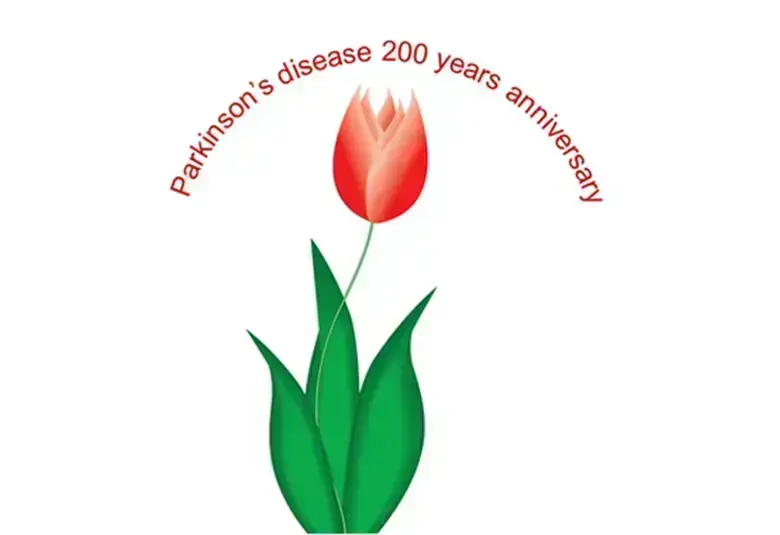Depending on specific tragic events, the media spotlight brightens and dims. But the demand for mental healthcare among people fleeing war and persecution can only grow. The European Psychiatric Association has described the crisis as one of the 21st century’s biggest challenges so far.
특정 비극적인 사건들에 의해 언론의 관심이 집중되기도 하고 사라지기도 합니다. 하지만 전쟁과 박해를 피해 도망다니는 사람들에게서 정신 건강관리에 대한 요구는 높아지기만 하고 있습니다. 유럽정신의학학회(European Psychiatric Association)는 이 위기를 21세기 현재까지의 가장 큰 도전과제 중 하나로 언급한 바 있습니다.
Sweden has accepted more refugees per head of population than any other European country. And it has pioneered research into the mental health consequences among those who have been forced to abandon their homes.
스웨덴은 다른 유럽 국가들보다 인구 일인당 더 많은 난민을 수용해왔으며, 고향을 등지고 떠나야만 했던 난민들을 대상으로 한 정신 건강 연구를 선도해왔습니다.
According to a recent paper, refugees are 66% more likely to experience schizophrenia or other non-affective psychotic disorder than migrants from the same region who are not refugees, and 3.6 times more likely to experience these outcomes than the offspring of native-born Swedish parents.1
최근 논문에 따르면, 난민이 조현병(schizophrenia) 또는 비정동 정신 장애(non-affective psychotic disorder)를 경험할 가능성이, 같은 지역에서 왔지만 난민이 아닌 이주민들에 비해 66% 높았고, 스웨덴 태생 부모의 자녀들보다 3.6배 높은 것으로 나타났습니다.1
The increased risk of psychosis was especially clear in men, and was found in refugees from all areas except sub-Saharan Africa. It is consistent with being caused by pre-emigration exposure to war, violence and persecution. Data were based on a national register including more than 1.3 million people born in 1984 and later, and cover 8.9 million years of follow up. Incidence was adjusted for age, sex, income, and population density.
정신병(psychosis) 위험 증가는 특히 남성에서 두드러지게 나타났는데, 사하라 사막 이남 아프리카를 제외한 모든 지역 출신의 난민에서 확인되었습니다. 이는 이주 전 전쟁, 폭력 및 박해에 노출되었을 때 초래된 위험과 관련성이 높습니다.
본 데이터는 1984년 이후에 태어난 130만명이 넘는 사람들을 포함한 국가 등록부(national register)를 토대로 한 것으로, 890만 인년의 추적조사(years of follow up)에 해당됩니다. 발생률은 연령, 성별, 소득 및 인구밀도에 대해 보정되었습니다.
Mental health in crisis situations
More broadly, according to the European Psychiatric Association (EPA) position paper on psychiatric care,2refugees:
- Are at greater risk of many mental health problems. These include major mood and anxiety disorders, post-traumatic stress disorder and psychosis. Among children, the prevalence of PTSD has been put at one in five.
- May present with symptoms that are culture-specific. Along with language difficulties, this is likely to lead to a high rate of misdiagnosis
- May not know how to access public provision of health care
- Are more likely than others to discontinue treatment
- Have specific needs that health care providers may find difficult to meet.
위기 상황에서의 정신 건강
더 광범위하게 살펴보면, 정신 관리에 대한 유럽정신의학학회(EPA)의 성명서에 따르면,2 난민들은 다음과 같은 상태입니다:
- 주요 기분 및 불안장애(major mood and anxiety disorders), 외상 후 스트레스 장애 및 정신병을 포함한 많은 정신 건강 질환에 걸릴 위험이 높으며, 아동 중 PTSD 유병률은 5명 중 1명으로 추산된다.
- 문화 특이적인 증상을 보일 수 있다. 언어 문제가 나타날 수 있으며, 그로 인해 오진율이 높게 나타날 가능성이 있다.
- 공공 의료 서비스를 이용하는 방법을 알지 못할 수 있다.
- 난민이 아닌 사람들보다 치료를 중단할 확률이 더 높다.
- 보건의료 제공자가 해결하기 힘들 수 있는 특정 수요(needs)를 가지고 있다.
As well as financial support, this crisis requires innovative thinking, research into the most effective means of meeting the need, and reinforcement of intercultural skills, says the EPA paper.
EPA 성명서에 따르면, 난민이 처한 정신건강위험을 해결하기 위해서는 재정적 지원 뿐만 아니라 혁신적인 사고, 수요를 충족시킬 수 있는 가장 효율적인 방법에 대한 연구 및 범문화적 기술들(intercultural skills)의 보완이 요구됩니다.
Among refugee children, the prevalence of PTSD may be 20%.
난민 아동의 경우, PTSD 유병률은 20% 정도입니다.
High rates of depression, anxiety and PTSD
Germany has been generous in its response to the mounting crisis, and the number of refugees received is the equivalent of a large city, with all its accompanying psychiatric needs. The Saxon city of Halle is relatively small, but illustrates the extent of the problem. A recent study of 214 asylum seekers (all but 24 were men) found that 55% were suffering from depression, 40% from anxiety disorder and 18% PTSD.3 Suicidal thoughts were mentioned by 6%.
높은 우울증, 불안 및 PTSD 발생률
독일은 커져가고 있는 위기의 대응에 있어 관대한 편이었으며, 수용한 난민 수는 대도시와 맞먹는 수치인데, 이들 모두 정신의학적 수요를 동반하고 있습니다. 독일 작센 주에 위치한 할레(Halle)라는 도시는 비교적 작지만, 이러한 문제의 심각성을 잘 보여주고 있습니다. 214명의 망명 신청자(24명을 제외한 나머지 모두 남성)에 대한 최근 연구에 따르면, 55%는 우울증, 40%는 불안장애, 18%는 PTSD를 겪고 있었습니다.3 6%는 자살 생각을 언급하였습니다.
The authors of the study emphasized the need for questions about psychological health to be included in initial medical screening and for this to take into account the culturally and linguistically diverse nature of the refugee population.
이 연구의 저자들은 초기 의학적 스크리닝에 정신 건강에 대한 질문이 포함되어야 하며, 이를 위해 난민 인구의 문화적/언어적 다양성을 고려해야 한다는 점을 강조하였습니다.
The EPA, which – through its national organisations -- represents almost eighty thousand European psychiatrists, has advocated the need for a religion and culture-specific approach to the mental healthcare of refugees, and a mix of local initiatives and expert co-ordinating centres.
국가 기구들을 통해 대략 80,000명의 유럽 정신과 의사를 대표하는 EPA는 난민의 정신 건강관리를 위해 종교 및 문화 특이적 접근방식이 필요하며 현지 이니셔티브(initiatives)와 전문가 조정 센터가 협업해야 한다고 주장하였습니다.
The number of refugees reaching Germany is the equivalent of a large city, with all its psychiatric needs
독일에 온 난민 수는 대도시 수준에 달하며, 모두 정신의학적 수요를 동반하고 있습니다.
One idea is that problems of language and cultural difference might be managed at least in part, not by the psychiatrists in European countries receiving refugees, since they are unlikely to have all the skills required, but by linking patients with doctors at a distance. This may mean e-consultation with psychiatrists of similar cultural background in other countries, and perhaps even in patients’ countries of origin.
한 가지 아이디어는 유럽 국가의 정신과 의사들이 필요한 모든 기술을 갖추고 있지 않을 가능성이 높기 때문에 난민을 수용하는 유럽 국가의 정신과 의사가 아닌, 멀리 떨어져 있는 의사와 환자를 연결해줌으로써 언어 및 문화적 차이 문제를 적어도 부분적으로 관리할 수 있다는 것입니다. 이는 환자와 유사한 문화적 배경을 가진 다른 국가, 또는 심지어 환자와 동일한 국가의 정신과 의사들과의 전자 상담을 의미할 수 있습니다.
Psychiatric care bordering conflict zones
The provision of psychiatric care in countries bordering those from which refugees come has been highlighted by a World Health Organisation-funded study of eight thousand displaced Syrians now living in Jordan.4 Almost 19% felt they could not undertake activities of daily living because of feelings of fear, anger, fatigue or hopelessness. Social isolation, aggression, and issues of child protection were among the consequences.
분쟁 지역에 인접한 국가의 정신의학적 관리
세계 보건기구의 재정적 지원을 받아 진행된 현재 요르단에 살고 있는 8000명의 시리아 실향민들에 대한 연구에서, 난민들의 출신 국가와 인접해 있는 국가에서의 정신의학적 관리 제공에 대해 강조하였습니다.4 이들 중 19% 정도가 두려움, 분노, 피로 또는 절망감 때문에 일상생활 활동을 수행할 수 없다고 느꼈습니다. 그 결과로 사회적 고립, 공격성 및 아동 보호 이슈 등의 문제들이 있었습니다.
Among children aged two to twelve years, nocturnal enuresis was a particular problem.
Although unprecedented in its scale in post-World War II Europe, mass migration is not an isolated event. According to the WHO, almost sixty million people across the globe are being forced to flee their homes. The sad fact is that what we learn from the psychiatric care of refugees coming to Europe and in countries bordering conflict zones in the Middle East will have many applications elsewhere.
2세-12세 아동에서 두드러지게 나타나는 문제는 야뇨증이었습니다.
규모면에서 2차 세계 대전 후의 유럽에서는 유례 없는 일이기는 하지만, 집단 이주는 유일한 사건은 아닙니다. WHO에 따르면, 전 세계에서 거의 6천만 명이 강제로 집을 떠나고 있습니다. 유감스러운 사실은 유럽으로 온 난민들과 중동의 분쟁 지역에 인접한 국가의 난민들에 대한 정신의학적 관리를 통해 알게 된 사실들이 다른 지역에서도 그대로 적용될 것이라는 것입니다.
본 자료는 Global Lundbeck 의학부에서 선별한 콘텐츠이며, 한국룬드벡의 의견과 다를 수 있습니다




